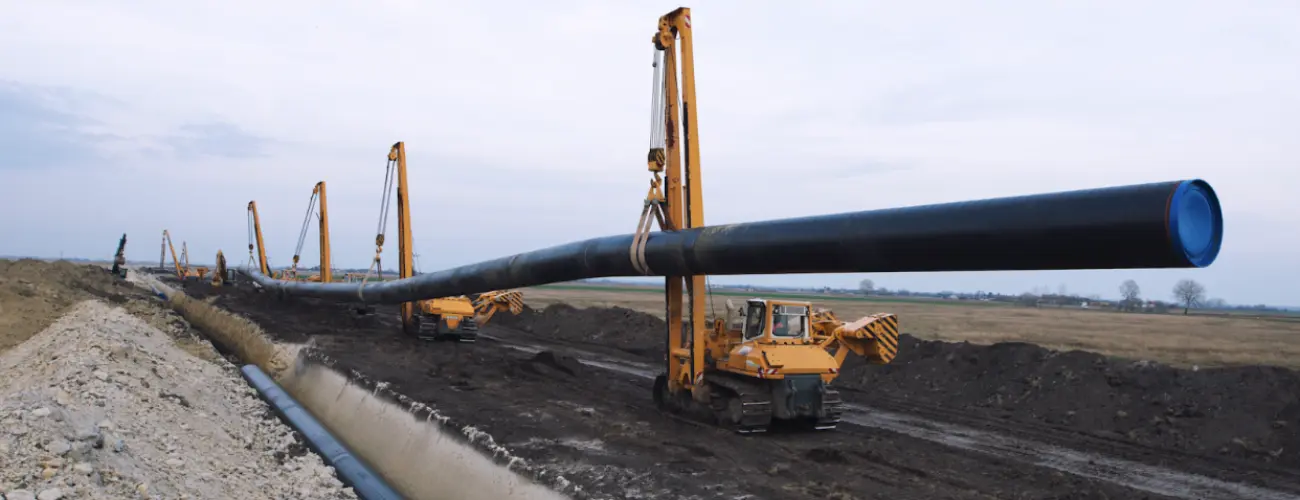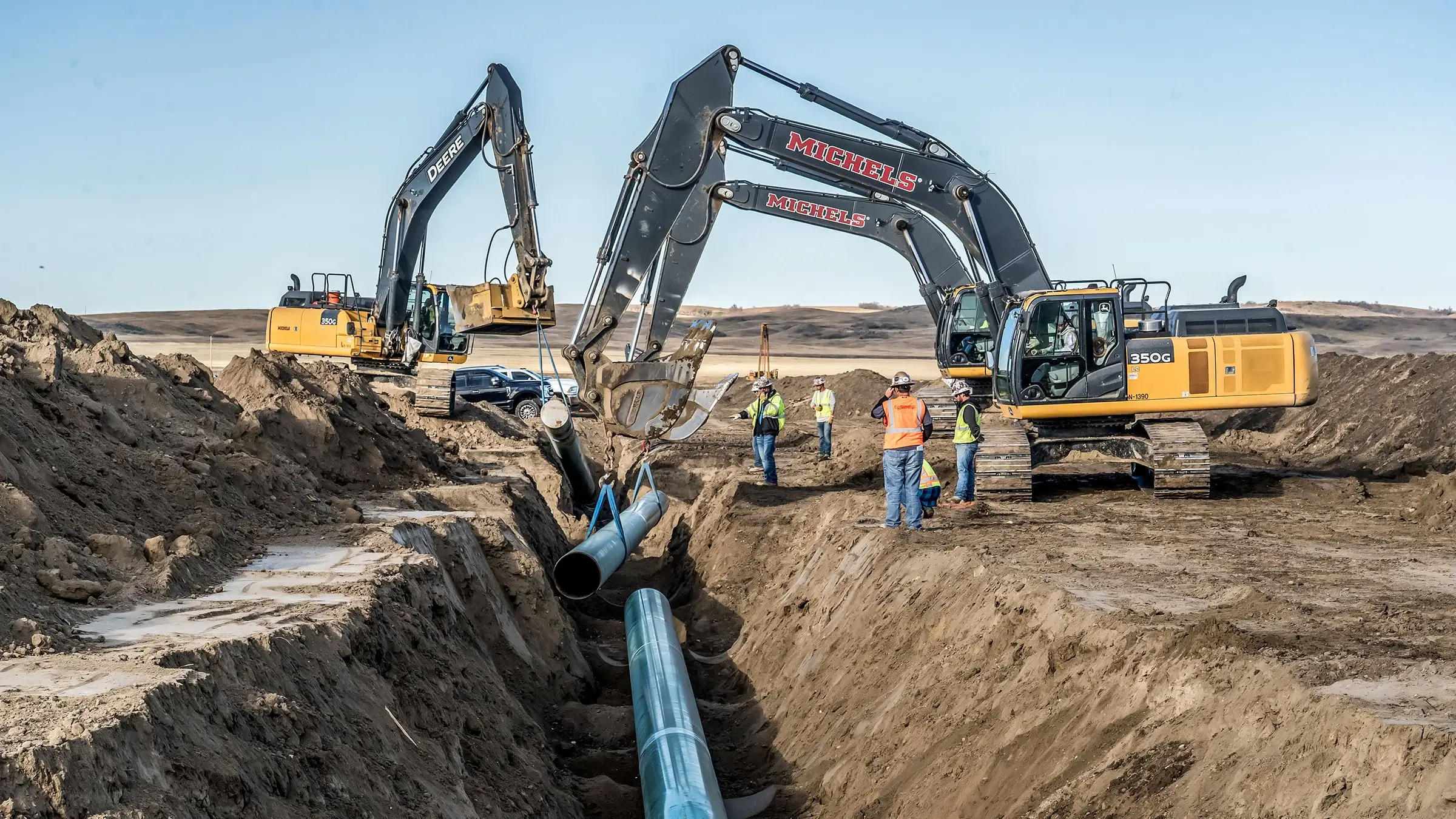What Sets Creek Pipe Midland Stands Out for Texas Installations
The Relevance of Pipeline Construction: Checking Out the Solutions Offered in the Market
Pipeline construction is a vital element of modern facilities. It helps with the transport of vital resources like oil, gas, and water. The sector encompasses various solutions, consisting of preparation, site preparation, and installation. Each stage requires accuracy and adherence to safety and security requirements. As neighborhoods depend on these systems for their livelihoods, comprehending the ins and outs of pipe construction reveals its importance and possible obstacles. What aspects affect the success of these projects?
Introduction of Pipeline Construction Services
Pipeline construction services incorporate a variety of specialized tasks designed to help with the setup of pipelines for transferring numerous substances, consisting of oil, gas, and water. These solutions typically include site preparation, excavation, installment of pipeline segments, and backfilling. Skilled labor and advanced devices are fundamental for assuring each stage is performed with accuracy and safety.Safety protocols are critical, as these projects usually include functioning with dangerous materials and in difficult settings. Quality assurance actions identify that the pipelines fulfill market requirements and regulations. Furthermore, the services might entail trenchless innovation, which minimizes surface disruption.Environmental considerations play a significant function in pipeline construction, calling for assessments and reductions to shield bordering ecosystems. In general, pipe construction services are important for establishing the facilities necessary for energy and water circulation, supporting both financial growth and social demands.
Preparation and Layout in Pipeline Projects
Effective preparation and style are crucial elements of successful pipeline tasks, guaranteeing that all elements are meticulously attended to prior to construction starts. This stage entails complete usefulness researches that assess the technological, economic, and environmental aspects influencing the job. Engineers and developers work together to produce thorough strategies that detail the pipe route, materials, and construction techniques, aligning with regulatory requirements and industry standards.Advanced software program and modeling methods are commonly employed to mimic different circumstances, enhancing the design for effectiveness and safety. Environmental impact evaluations are carried out to mitigate prospective injury to environments and areas, reflecting a commitment to sustainable techniques. Additionally, stakeholder interaction is essential, promoting interaction and resolving issues from affected parties. Ultimately, effective planning and design established the foundation for a pipeline job, decreasing threats and guaranteeing a structured construction procedure, inevitably adding to the general success of the procedure.
Website Prep Work and Excavation
Thorough website prep work and excavation are vital action in the pipeline construction process. This phase involves a comprehensive assessment of the land where the pipeline will certainly be installed. Job groups conduct surveys to identify soil kinds, topography, and existing energy lines to assure a secure and reliable excavation. Appropriate website preparation reduces environmental impact and assists in smoother construction operations.Excavation complies with, where heavy machinery is employed to eliminate soil and rock, developing a trench that fulfills the defined deepness and size for the pipe. This procedure must adhere to safety regulations and ecological standards to stop damages to bordering ecosystems.Additionally, erosion control steps are carried out to stabilize the website during and after excavation. Efficient site preparation and excavation contribute substantially to the total success of pipeline tasks, laying a strong foundation for the succeeding phases of construction.
Pipeline Installation Techniques
Pipeline installation methods are important for the successful application of framework tasks. 2 popular techniques consist of trenchless technology, which decreases surface disturbance, and the open-cut excavation process, known for its straightforward strategy. Each strategy uses distinct benefits and considerations depending upon task requirements and ecological factors.
Trenchless Innovation Approaches
While conventional approaches of pipe setup often include extensive excavation, trenchless innovation approaches offer a much more reliable and eco-friendly option. These cutting-edge techniques, such as horizontal directional exploration and pipe bursting, decrease surface disturbance by permitting the setup of pipes without considerable digging. This not only minimizes the environmental effect but likewise significantly reduces labor and remediation costs. Trenchless approaches facilitate the setup of pipes in city locations where typical excavation would certainly be not practical or destructive to existing infrastructure. Additionally, these techniques can accommodate various dirt kinds and problems, making them functional options for pipe construction. Eventually, trenchless innovation represents a considerable improvement in the pipeline market, advertising sustainability and functional effectiveness.

Open-Cut Excavation Process
Open-cut excavation continues to be a fundamental technique in pipe setup, identified by the direct excavation of a trench to lay pipelines. This method involves removing dirt and various other materials to produce a trench of sufficient deepness and size, enabling for the placement of pipes at the called for grade. Open-cut excavation is often liked for its cost-effectiveness and simpleness, particularly in locations with stable dirt conditions. It can disrupt surface area activities and needs mindful planning to take care of traffic and environmental influences. Safety actions must be applied to protect workers and neighboring facilities throughout the excavation procedure. Overall, while open-cut excavation might not be suitable for all terrains, it continues to be a widely utilized strategy in pipeline construction.
Checking and Quality Control
Examining and quality control are essential elements in pipeline construction, ensuring that setups fulfill recognized safety and security standards and performance needs. Numerous examination methods and methods are employed to examine worldly high quality and adherence to governing conformity. This methodical technique assists identify possible issues before they intensify, securing the honesty of the pipe system.

Examination Techniques and Approaches
Inspection strategies and methods are vital elements in making sure the stability and safety of pipe construction. Numerous techniques, including visual examinations, ultrasonic screening, and radiographic assessments, are employed to detect issues and validate high quality. Visual examinations permit the identification of surface area abnormalities, while ultrasonic testing makes use of acoustic waves to assess wall surface density and locate imperfections inside. Radiographic assessments include X-rays browse this site or gamma rays to produce photos of the pipeline's structure, disclosing concealed concerns. Furthermore, pressure screening is performed to assess the pipeline's stability under operational conditions. These methods collectively add to a thorough understanding of the pipe's condition, enabling prompt upkeep decisions and making sure compliance with industry standards. Reliable examination is essential for preventing failures and promoting lasting functional security.
Safety And Security Criteria Conformity
Guaranteeing compliance with safety and security standards is vital in pipe construction, as it directly impacts the project's general high quality and integrity. Abiding by well-known guidelines and standards guarantees that construction techniques mitigate risks connected with pipeline installation and operation. Creek Pipe reviews. Strenuous screening protocols, consisting of non-destructive screening and stress assessments, are essential in confirming that pipelines can endure the operational anxieties they will certainly come across. Quality control actions are also important, as they establish a framework for constant tracking and examination throughout the construction procedure. By prioritizing safety and security criteria conformity, business not just protect workers and the environment but likewise improve the honesty of the pipeline, ultimately leading to lasting functional success and public depend on in the infrastructure
Product Top Quality Examination
Material quality evaluation plays a significant role in the total stability of pipeline construction. This procedure includes rigorous screening and quality control procedures to ensure that materials satisfy industry criteria and specs. Various examinations, including tensile strength, deterioration resistance, and visit homepage weld stability evaluations, are conducted to recognize any type of potential weak points. An extensive analysis not only ensures the efficiency of the pipeline however additionally boosts safety and resilience over its lifespan. Additionally, carrying out quality assurance methods assists alleviate threats connected with product failings, which can result in expensive fixings and environmental dangers. By focusing on worldly quality examination, firms can guarantee compliance with regulative needs while fostering self-confidence among stakeholders in the reliability of their pipe systems.
Upkeep and Fixing Services
Repair and maintenance solutions play an important function in the durability and performance of pipe systems. These solutions incorporate normal evaluations, fixing, and restorative actions to attend to deterioration, leakages, and various other concerns that might emerge over time. Competent professionals make use of innovative technologies such as ultrasonic testing and smart pigging to keep track of pipe honesty, ensuring that any type of prospective troubles are identified early.Additionally, upkeep programs tractor with loader and backhoe frequently consist of scheduled precautionary measures created to boost system reliability and minimize the likelihood of unforeseen failures. Repair services might involve the substitute of broken sections, sealing leakages, or using trenchless modern technology for very little interruption.
Environmental Conformity and Precaution
Pipeline systems not only need continuous maintenance and repair service to operate successfully yet additionally have to stick to rigorous ecological compliance and security measures. These guidelines are essential for minimizing eco-friendly effect and guaranteeing public safety. Business in the pipeline construction market implement detailed ecological evaluations prior to task initiation, determining potential threats to wildlife and ecosystems.Furthermore, adherence to safety and security procedures safeguards employees and bordering communities. This includes routine training on emergency situation action and spill prevention techniques.To preserve compliance, markets utilize keeping track of innovations to find leaks and other abnormalities in real-time. Ecological monitoring strategies are typically created to lay out actions for dealing with unanticipated issues throughout construction.Ultimately, rigorous adherence to environmental conformity and safety and security actions not just meets legal commitments but also fosters sustainable methods within the sector, promoting a balance between framework growth and environmental stewardship.
Often Asked Concerns
What Job Opportunities Are Available in Pipeline Construction?
Career opportunities in pipeline construction incorporate duties such as task supervisors, designers, welders, and security examiners. These positions require varied abilities, offering paths for growth in an essential industry of facilities advancement and energy distribution.

Exactly How Do Pipeline Projects Influence Citizen Communities?
Pipeline jobs greatly influence neighborhood areas by influencing economic growth, offering job chances, and boosting infrastructure. Nevertheless, they might also raise problems concerning ecological effects, land use, and prospective disruptions to neighborhood cohesion and all-natural environments.
What Innovation Is Utilized in Modern Pipeline Construction?
Modern pipeline construction makes use of advanced innovations such as GIS for mapping, drones for aerial surveys, and automated welding systems to boost efficiency, safety and security, and accuracy, inevitably facilitating the effective transportation of resources throughout different terrains. Creek Pipe pipeline construction.
Exactly How Are Pipeline Construction Prices Approximated?
Pipeline construction costs are estimated with comprehensive assessments of materials, labor, equipment, and governing demands. Aspects like terrain, job dimension, and ecological factors to consider additionally greatly affect the total spending plan and economic preparation for construction.
What Are the Largest Obstacles in Pipeline Construction Projects?
The greatest difficulties in pipeline construction projects consist of governing conformity, environmental concerns, logistical concerns, safeguarding financing, and handling labor shortages. Each factor can greatly influence timelines and spending plans, complicating the overall implementation of the job.